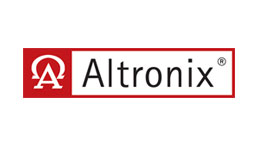The Monitoring Association (TMA) has welcomed six new local PSAPs/Emergency Communication Centers (ECCs) from across the United States to its ASAP-to-PSAP service since December 20, 2021. These include: Albemarle County-UVA-City of Charlottesville VA; Thurston County WA 9-1-1 Communications (WA); Talladega County Alabama 9-1-1; Valley Communications Regional 9-1-1 Center (WA); City of Colonial Heights VA Emergency Communications Center (ECC) (VA); and Elk County Pennsylvania Emergency Services. Launched in 2011 as a public-private partnership, TMA’s ASAP service is designed to increase the accuracy and efficiency of calls for service from alarm companies to Emergency Communication Centers (ECCs).
“In an emergency situation when every second counts, TMA’s ASAP service is reducing response time for our first responders by increasing the speed of communication from the security provider to the local ECC,” commented TMA President Morgan Hertel. “As we’ve seen over the course of recent months, this communication protocol is gaining broad adoption across the United States as municipalities learn more about its life-saving benefits firsthand from public safety peers. It’s rewarding for all of those within TMA who have contributed immeasurable hours and technical expertise, as well as financial support, to the development and advancement of this important service.”
Learn more about TMA’s ASAP service at www.tma.us/asap/.
ECC details:
Elk County PA (#99)
Elk County Pennsylvania Emergency Services became the 99th Emergency Communications Center (ECC) in the United States and the 6th ECC in the state of Pennsylvania to implement the Automated Secure Alarm Protocol (ASAP). Elk County went live on Thursday, February 3rd with Vector Security, Rapid Response Monitoring, Securitas, Affiliated Monitoring, Tyco (Johnson Controls), Protection One, Brinks Home Security, Vivint, Stanley Security, Quick Response, Security Central, Guardian Protection and ADT.
City of Colonial Heights VA (#98)
The City of Colonial Heights VA Emergency Communications Center (ECC) is the 98th public safety communications center in the United States and the 20th agency in the state of Virginia to implement the Automated Secure Alarm Protocol (ASAP). The Colonial Heights ECC went live on Wednesday, February 2, 2022, with Rapid Response Monitoring, CPI Security, Stanley Security, Securitas, Guardian Protection, Protection One, Vector Security, Tyco (Johnson Controls), United Central Control, Vivint, Security Central, Brinks Home Security, National Monitoring Center, Affiliated Monitoring, Richmond Alarm, and ADT.
Valley Communications WA (Valley Comm) (#97)
The Valley Communications Regional 9-1-1 Center, based in Kent WA, also known as “Valley Com 9-1-1”, is the 97th public safety communications center in the United States and the 3rd agency in the state of Washington to implement the Automated Secure Alarm Protocol (ASAP). Valley Com went live on Tuesday, February 1, 2022, and Wednesday, February 2, 2022, with Vector Security, Rapid Response Monitoring, Guardian Protection, Security Central, Securitas, Stanley Security, United Central Control, Tyco (Johnson Controls), Affiliated Monitoring, National Monitoring Center, Brinks, Vivint, and Protection One. ADT and Washington Alarm will be live with Valley Comm later during the month of February.
Talladega County Alabama 9-1-1 (#96)
On Thursday, January 27, 2020, Talladega County Alabama 9-1-1 became the 96th ECC in the United States and the 3rd ECC in the state of Alabama to implement the Automated Secure Alarm Protocol (ASAP). Talladega went live on Thursday, January 27th with Rapid Response Monitoring, Vector Security, Securitas, Affiliated Monitoring, ADS, Tyco (Johnson Controls), Security Central, Protection One, Brinks Home Security, Vivint, Stanley Security, Guardian Protection, Alert 360, and National Monitoring Center. ADT will be brought online at a later date.
Thurston County WA 9-1-1 Communications (#95)
The Thurston County WA 9-1-1 Communications, also known as “TCOMM911”, is the 95th public safety communications center in the United States and the 2nd agency in the state of Washington to implement the Automated Secure Alarm Protocol (ASAP). TCOMM911 went live on Monday, January 24, 2022, and Tuesday, January 25, 2022, with Vector Security, Rapid Response Monitoring, Guardian Protection, United Central Control, Securitas, Security Central, Tyco (Johnson Controls), National Monitoring Center, Affiliated Monitoring, Protection One, Brinks, Vivint, ADT, and Stanley Security.
Albemarle County-UVA-City of Charlottesville VA (#94)
The Albemarle County-University of Virginia-City of Charlottesville VA Emergency Communications Center (ECC) is the 94th public safety communications center in the United States and the 19th agency in the state of Virginia to implement the Automated Secure Alarm Protocol (ASAP). The Albemarle-UVA-Charlottesville ECC went live on Monday, December 20th with Vector Security, Rapid Response Monitoring, Security Central, CPI Security, Securitas, Tyco (Johnson Controls), Richmond Alarm, Wegmans Security, Guardian Protection, Affiliated Monitoring, Stanley Security, National Monitoring Center, Brinks Home Security, Vivint, United Central Control, Protection One, and ADT.
 We are saddened to inform you of the passing of John Woodman, former president of Washington Alarm and TMA Board of Directors member. A pivotal figure within the alarm industry, John passed away on Wednesday, November 22nd.
We are saddened to inform you of the passing of John Woodman, former president of Washington Alarm and TMA Board of Directors member. A pivotal figure within the alarm industry, John passed away on Wednesday, November 22nd. 








